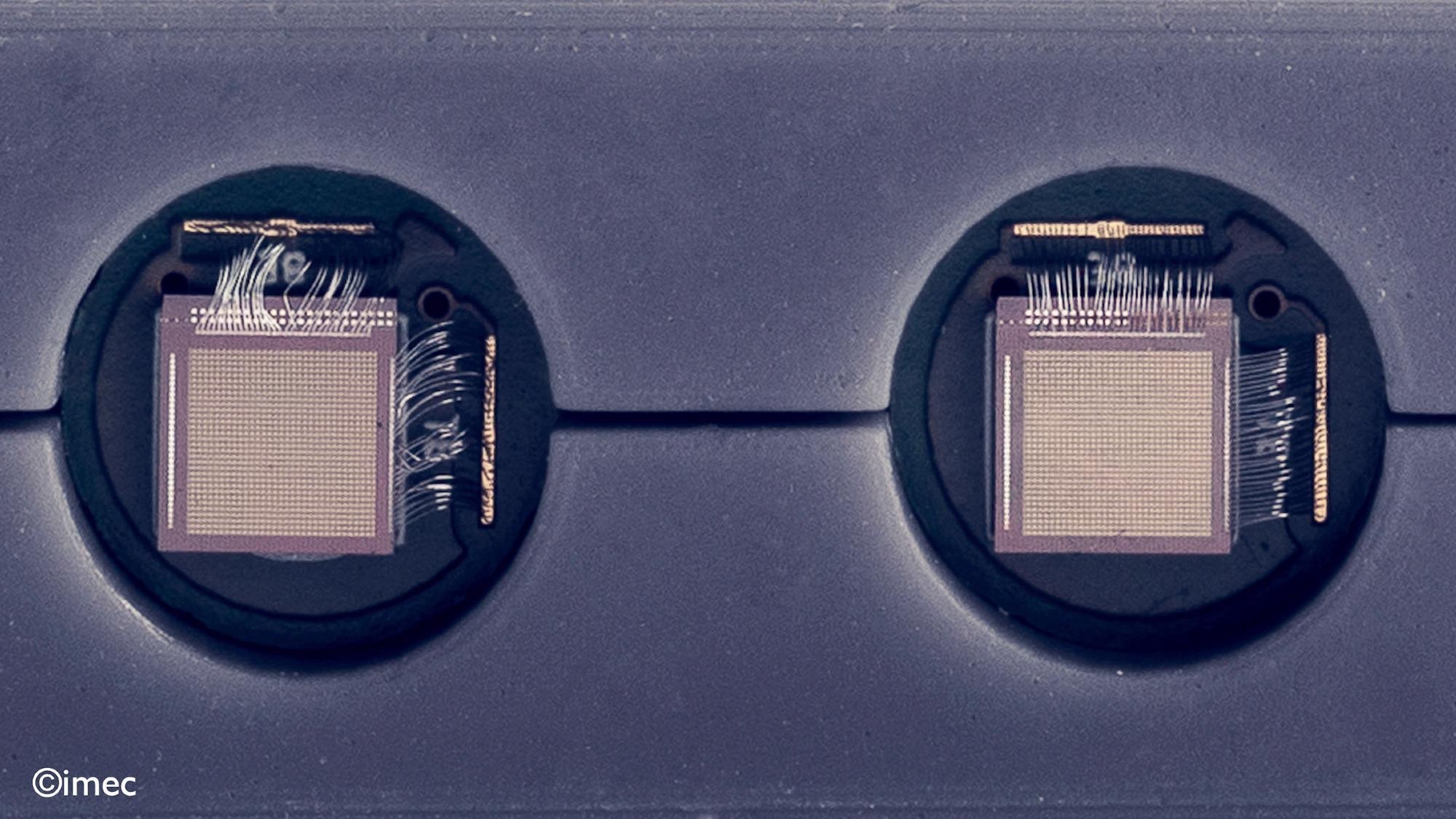Jun 30 2021
Imec, a world-leading research and innovation hub in nanoelectronics and digital technologies, presents a proof-of-concept for determining arterial stiffness, a risk marker for cardiovascular diseases such as stroke and heart failure, and monitoring blood pressure. Imec’s approach uses an ultrasound sensor to measure the central pulse wave velocity.
 Two pMUT sensors integrated in an ultrasound probe demonstrator. Image Credit: Imec
Two pMUT sensors integrated in an ultrasound probe demonstrator. Image Credit: Imec
Measuring pulse wave velocity closer to the heart is also a more reliable proxy for blood pressure than existing peripheral measurements. The method has the potential to improve the practicality of clinical cardiovascular risk assessment in the GP’s office because the ultrasound sensor could be scaled to the size of a portable or wearable device.
Cardiovascular disease (CVD) is globally among the leading causes of death. Early identification of individuals at risk allows for early intervention. Arterial stiffness is an independent predictor of CVD and a marker for developing hypertension. The recommended practice to assess arterial stiffness is by measuring the arterial pulse wave velocity (PWV). However, because PWV measures often require invasive or less accessible imaging methods, clinicians prefer a cuff-based blood pressure measure to assess CVD risk. Nevertheless, a more practical central PWV method would add value over conventional cuff-measured blood pressure to determine CVD risk. Without a way to easily screen a large population for arterial stiffness, many individuals remain undiagnosed.
“We have developed a promising method to determine PWV using an ultrasound sensor and a novel data analysis approach. The ultrasound sensor captures the heartbeat of the patient in the neck and the algorithms subsequently extract the features necessary to calculate PWV. PWV can then be used to determine cardiovascular function indicators, such as arterial stiffness and blood pressure,” said Fabian Beutel, Biomedical R&D Engineer and PhD candidate at KU Leuven.
Moreover, the researchers showed that a central PWV (closer to the heart) correlates more reliably with blood pressure than a peripheral measurement. “Our approach holds great clinical potential for continuous CVD monitoring and longitudinal unobtrusive blood pressure measurements, since imec’s ultrasound sensor technology can be reduced to fit the size of a portable or wearable device, such as a smartphone or patch,” said Xavier Rottenberg, Fellow Wave-Based Sensors and Actuators.
A small-scale cohort involving 10 people featuring a wide range of blood pressure values from normal to elevated demonstrated the proof-of-concept of this novel method to measure central PWV and estimate blood pressure. The test confirmed that measuring PWV centrally correlated better with arterial stiffness and blood pressure than the traditional peripheral method using an ECG and an optical measurement at a distance from the heart. Unlike with conventional methods, the new blood pressure estimates are within the accuracy limits used in the IEEE blood pressure validation standard.
“This technology and algorithm can be scaled to any device that fits the application: portable, wearable and even ingestible devices. We’re looking for companies to join us in the research and development of this technology and unlock new medical applications,” Carlos Agell, Health Solutions Program Manager.
Source: http://www.imec-int.com